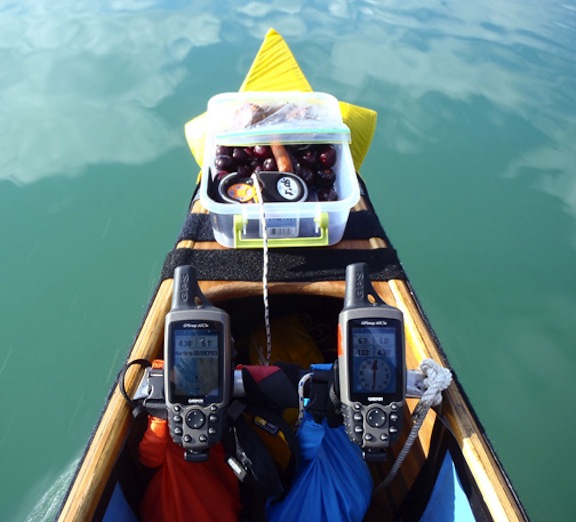I've always been very happy with my Garmin 60csx for many years. I detest that I later bought a 62. I hate the change in the display interface appearance and the way it mounts to handlebars and canoe thwarts, requiring use of zip cable ties each time you change where it mounts. The 60 requires only a stubby phillips screwdriver that I carry in my PFD to go from one canoe to another. And the 60 will always last for more than 24 continuous hours on one set of batteries. I can practically set my watch with batteries dying in the 62 every 7 hours, almost exactly 7 hours every time, regardless of display or settings, while the 60 continues to happily purr on. I use 2 60csx units with different info displays in front of me, mounted to the thwart of my canoe during canoe races, but I almost threw the dang 62 in the Yukon river after the 3rd battery set died on the 7 hour clock during a Yukon River race. I had the 62 running only as a backup with another crew member and did not change screens or manipulate it at all during operation until the 7 hour dead battery mark. I always use lithium batteries in all GPS units. My SAR team has the newer 64 model, which I have shown during search incidents acts the same as the unfortunate 62 with dislikable display screen and poor battery life. So I went to ebay and bought 2 additional 60csx units while I still could.
Consider setting the display to North Up only, or switch to a screen that does not display a map...perhaps de-select terrain or noaa charts and simply have the base map on the screen. The power necessary for the CPU to do computations to decide what objects should be included on the map, display the map, rotate the map, and update the map is huge compared to simply updating some digits in the trip computer screen.
Check the manual for other power saving features such as display illumination time or intensity, disabling the compass, pressure, and temperature sensors. And turn off unnecessary communication such as Bluetooth or nmea serial output, or ANT for interfacing to other sensors
I think that initial or default settings are designed to give a user an operating mode which gives an impressive feature set without forcing the user to read the manual or figure out any menus. This has nothing to do with maximizing battery life.
I have never had a GPS that produced a reading which was inconsistent from my compass.
However, there are far too many things that can go wrong when using the GPS compass.
-Failure to re-calibrate when batteries are changed
-Inaccurate calibration by having large tilt or rotating fast, but not enough tilt or rotation to trigger an error screen.
-Failure to hold the unit perfectly level when calibrating...some people recommend that you rest the unit on a flat, non-magnetic surface when you twist it for calibration.
-Calibration with a significant magnetic disturbance being applied-- the metal of a heavy watch or the magnets in many of fitness watches.
-Erroneous interpretation of indication as magnetic north/true north
Some mitigations include
-excessive tilt warning during use
-showing the sun and moon on the compass dial to serve as a quick check.
-prompting to check unit for consistency after time or distance has increased by a certain amount
-blanking compass screen after battery change without a calibration
-blanking the compass screen when the unit is being operated outside of its specifications.
-clearly indicating whether a reading is true or magnetic
The technical implementation of most GPS compasses is extremely flawed because most cannot accommodate reasonably foreseeable misuse

